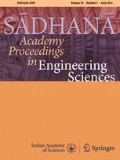Abstract
This study analyzes the effect of consonant context and speaking rate on vowel space and coarticulation in Toda vowel-consonant-vowel (VCV) sequences. Five vowels, /a/, /e/, /i/, /o/, /u/, and two intervocalic consonants, /p/ (labial) and /t/ (alveolar), are considered to form asymmetrical VCV sequences in slow and very fast speaking rates. Acoustic analysis using first and second formants (F1 and F2) shows a significant change in vowel space across speaking rates in a consonant specific manner. Quantification of range and extent of coarticulation using F2 are presented to carry out acoustic analysis of both anticipatory and carryover coarticulation. Significant effect of consonant context is found for both anticipatory and carryover coarticulation in most of the VCV sequences. Increase in speaking rate is found to significantly drop both anticipatory and carryover coarticulation range in the context of alveolar consonants. Results from these acoustic analyses indicate that there are differences in the nature in which rate and consonant context affect the coarticulatory organization.







Similar content being viewed by others
References
Augustine A, Harvey M S, and Björn Lindblom 2009 The effect of speaking rate on consonant vowel coarticulation. In: Phonetica 65.4, pp. 194–209.
Paul B and DavidWeenink 2011 Praat: Doing phonetics by computer (Version 5.1. 2.9)[Computer software]. In: Current version available: http://www.fon.hum.uva.nl/praat/
Cu Caktivēl (1976). Phonology of Toda with vocabulary. Annamalai University.
Murray B E 1937 The songs of the todas. In: Proceedings of the American Philosophical society 77.4, pp. 543–560.
Murray B E 1984 Toda grammar and texts. Vol. 155. American Philosophical Society, Philadelphia
Gobl C and Chasaide A N (1999) Techniques for analysing the voice source. In: Coarticulation: Theory Data and Techniques, edited by Hardcastle W. J. and Hewlett N. (Cambridge University Press), pp. 300–320.
Ganesh G and Indranil D (2015) The role of labiolingual gestural coordination in spatiotemporal facilitation of speech production in Turkish, Turkmen and Hindi. In: ICPhS. https://www.internationalphoneticassociation.org/icphs-proceedings/ICPhS2015/Papers/ICPHS0792.pdf.
William J H and Nigel H (2006) Coarticulation: Theory, data and techniques. Cambridge University Press, Cambridge
James M H, Michael J C and Terrance M N (2001) Effects of consonant environment on vowel formant patterns. J. Acoust. Soc. Am. 109(2): 748–763.
Antti I (1995) Explaining the dispersion of the single-vowel occurrences in an F1/F2 space. Phonetica 52(3): 221–227.
Ewa J and Robert A F (2008) Amplitude variations in coarticulated vowels. J. Acoust. Soc. Am. 123(5): 2750–2768.
Bhadriraju K 2003 The Dravidian Languages. Cambridge University Press, Cambridge
Theodore M L 1973 On vowel-lengthening in English. Paper Linguist. 6(1-4), 257–258. 10.1080/08351817309370340
Björn L 1963 Spectrographic study of vowel reduction. J. Acoust. Soc. Am. 35(11), 1773-1781
Björn L (1983) Economy of speech gestures. In: The production of speech. Springer, pp. 217–245.
Gary D L 2007 Phonetic grounding and phonology: Vowel backness harmony and vowel height harmony. PhD thesis. University of Illinois at Urbana-Champaign.
Sharon Y M and Rena A K 1984 Universal and language particular aspects of vowel-to-vowel coarticulation. Haskins Lab. Status Rep. Speech Res. 77(78): 69–78.
David W M 1981 Proto-elamo-dravidian: The evidence and its implications. Trans. Am. Philos. Soc. 71(3): 1–155.
Randall B M and Engebretson A M 1983 The accuracy of formant frequency measurements: A comparison of spectrographic analysis and linear prediction. J. Speech Lang. Hear. Res. 26(1): 89–97.
Kevin M and Anders L 1992 Gestural aggregation in speech-laryngeal gestures. J. Phonet. 20(1): 111–126.
Sven E G 1966 Coarticulation in VCV utterances: Spectrographic measurements. J. Acoust. Soc. Am. 39(1): 151–168.
Sven E G 1967 Numerical model of coarticulation. J. Acoust. Soc. Am. 41(2): 310–320.
Marek P 2000 Vowel harmony and vowelto- vowel coarticulation in three dialects of Yoruba. Working Pap. Cornell Phonet. Lab. 13: 105–124.
Daniel R 1984 Vowel-to-vowel coarticulation in Catalan VCV sequences. J. Acoust. Soc. Am. 76(6): 1624–1635.
Daniel R 1989 Long range coarticulation effects for tongue dorsum contact in VCVCV sequences. Speech Commun. 8(4): 293–307.
Daniel R 2015 The effect of stress and speech rate on vowel coarticulation in Catalan vowel-consonant- vowel sequences. J. Speech Lang. Hear. Res. 58(5): 1407–1424.
Michael S, Peter L, and Peri B 1993 Phonetics of Toda. In: Master’s thesis, UCLA 84, pp. 89–123.
Siniša S, Peter L, and Peri B 1996 The trills of Toda. J. Int. Phonet. Assoc. 26(01), 1–21.
Kenneth N S and Arthur S H 1963 Perturbation of vowel articulations by consonantal context: An acoustical study. J. Speech Hear. Res. 6(2): 111–128.
“A model of optimal speech production planning integrating dynamical constraints to achieve appropriate articulatory timing”. In: Cognitive and Physical Models of Speech Production, Speech Perception and Production-Perception Interaction-Part III Planning and Dynamics (CPMSP2 2010), pp. 44–48.
“Zoom high-quality unidirectional microphone, available online: https://www.zoom-na.com/, last accessed:3/5/2019” (n.d.). In: (). url: https://www.zoom- na.com/ products/product-accessories/zoom-xyh-6- xy-stereo-microphone-capsule.
Acknowledgements
We thank all speakers and Mrs. Vasamali for helping in Toda data collection and the Pratiksha Trust for their support.
Author information
Authors and Affiliations
Corresponding author
Rights and permissions
About this article
Cite this article
Narayanan, S., Illa, A., Anand, N. et al. An acoustic investigation on the effect of speaking rate on vowel space and coarticulation in Toda VCV sequences. Sādhanā 46, 128 (2021). https://doi.org/10.1007/s12046-021-01639-8
Received:
Revised:
Accepted:
Published:
DOI: https://doi.org/10.1007/s12046-021-01639-8




